Effect of Various Types of Superplasticisers on Consistency, Viscosity, Structure and Long-Term Strength of Geopolymer Products
Abstract
:1. Introduction
2. Materials and Production Methodology
2.1. Matrix
2.2. Admixtures
2.3. Production of the Test Specimens
2.4. Specimen Curing Conditions
2.5. Consistency Testing
2.6. Air Void Content
2.7. Viscosity
2.8. Compressive and Flexural Strength
3. Results and Discussion
3.1. Consistency Testing
3.2. Air Void Content
3.3. Viscosity
3.4. Microscopic Testing
3.5. Compressive and Flexural Strength
4. Conclusions
Funding
Institutional Review Board Statement
Informed Consent Statement
Data Availability Statement
Acknowledgments
Conflicts of Interest
References
- Dudek, M.; Sitarz, M. Analysis of Changes in the Microstructure of Geopolymer Mortar after Exposure to High Temperatures. Materials 2020, 13, 4263. [Google Scholar] [CrossRef]
- Ukrainczyk, N.; Muthu, M.; Vogt, O.; Koenders, E. Geopolymer, Calcium Aluminate, and Portland Cement-Based Mortars: Comparing Degradation Using Acetic Acid. Materials 2019, 12, 3115. [Google Scholar] [CrossRef] [PubMed] [Green Version]
- Pawluczuk, E.; Kalinowska-Wichrowska, K.; Soomro, M. Alkali-Activated Mortars with Recycled Fines and Hemp as a Sand. Materials 2021, 14, 4580. [Google Scholar] [CrossRef] [PubMed]
- Hardjito, D.; Rangan, B.V. Development and Properties of Low-Calcium Fly Ash-Based Geopolymer Concrete; Curtin University of Technology: Perth, Australia, 2005. [Google Scholar]
- Nagaraj, V.K.; Venkatesh Babu, D.L. Assessing the performance of molarity and alkaline activator ratio on engineering properties of self-compacting alkaline activated concrete at ambient temperature. J. Build. Eng. 2018, 20, 137–155. [Google Scholar] [CrossRef]
- Nguyen, K.T.; Ahn, N.; Le, T.A.; Lee, K. Theoretical and experimental study on mechanical properties and flexural strength of fly ash-geopolymer concrete. Constr. Build. Mater. 2016, 106, 65–77. [Google Scholar] [CrossRef]
- Anaszewicz, Ł.; Rekucki, R.; Stolarski, A. Effects of Portland cement addition on Young’s modulus of geopolymer concrete cured at ambient conditions. Bull. Mil. Univ. Technol. 2018, 67, 71–82. [Google Scholar] [CrossRef]
- Yost, J.R.; Radlińska, A.; Ernst, S.; Salera, M.; Martignetti, N.J. Structural behavior of alkali activated fly ash concrete. Part 2: Structural testing and experimental findings. Mater. Struct. 2013, 46, 449–462. [Google Scholar] [CrossRef]
- Visintin, P.; Mohamed Ali, N.; Albitar, M.; Lucas, W. Shear behaviour of geopolymer concrete beams without stirrups. Constr. Build. Mater. 2017, 148, 10–21. [Google Scholar] [CrossRef]
- Mathew, G.; Joseph, B. Flexural behaviour of geopolymer concrete beams exposed to elevated temperatures. J. Build. Eng. 2018, 15, 311–317. [Google Scholar] [CrossRef]
- Palacios, M.; Puertas, F. Effect of superplasticiser and shrinkage-reducing admixes on alkali-activated slag pastes and mortars. Cem. Concr. Res. 2005, 35, 1358–1367. [Google Scholar] [CrossRef]
- Jithendra, C.; Elavenil, S. Role of Superplasticiser on GGBS based Geopolymer Concrete under ambient curing. Mater. Today Proc. 2019, 18, 148–154. [Google Scholar] [CrossRef]
- Jang, J.G.; Lee, N.K.; Lee, H.K. Fresh and hardened properties of alkali-activated fly ash/slag pastes with superplasticisers. Constr. Build. Mater. 2014, 50, 169–176. [Google Scholar] [CrossRef]
- Gupta, N.; Gupta, A.; Saxena, K.K.; Shukla, A.; Goyal, S.K. Mechanical and durability properties of geopolymer concrete composite at varying superplasticiser dosage. Mater. Today Proc. 2021, 44, 12–16. [Google Scholar] [CrossRef]
- Criado, M.; Palomo, A.; Fernández-Jiménez, A.; Banfill, P.F.G. Alkali activated fly ash: Effect of admixes on paste rheology. Rheol. Acta 2009, 48, 447–455. [Google Scholar] [CrossRef]
- Nuruddin, F.M.; Demie, S.; Ahmed, F.M.; Shafiq, N. Effect of Superplasticiser and NaOH Molarity on Workability, Compressive Strength and Microstructure Properties of Self-Compacting Geopolymer Concrete. Int. J. Geol. Environ. Eng. 2011, 5, 187–194. [Google Scholar]
- Memon, F.A.; Nuruddin, M.F.; Demie, S.; Shafiq, N. Effect of Superplasticiser and Extra Water on Workability and Compressive Strength of Self-Compacting Geopolymer Concrete. Res. J. Appl. Sci. Eng. Technol. 2012, 4, 407–414. [Google Scholar]
- Montes, C.; Zang, D.; Allouche, E.N. Rheological behavior of fly ash-based geopolymers with the addition of superplasticisers. J. Sustain. Cem. Based Mater. 2012, 1, 179–185. [Google Scholar] [CrossRef]
- Laskar, A.I.; Bhattacharjee, R. Effect of Plasticiser and Superplasticiser on Rheology of Fly-Ash-Based Geopolymer Concrete. ACI Mater. J. 2013, 110, 513–518. [Google Scholar]
- Nematollahi, B.; Sanjayan, J. Efficacy of available superplasticisers on geopolymers. Res. J. Appl. Sci. Eng. Technol. 2014, 7, 1278–1282. [Google Scholar] [CrossRef]
- Xie, J.; Kayali, O. Effect of superplasticiser on workability enhancement of Class F and Class C fly ash-based geopolymers. Constr. Build. Mater. 2016, 122, 36–42. [Google Scholar] [CrossRef]
- Salami, B.A.; Megat, J.M.; Ahmad, Z.A.; Maslehuddin, M. Impact of added water and superplasticiser on early compressive strength of selected mixes of palm oil fuel ash-based engineered geopolymer composites. Constr. Build. Mater. 2016, 109, 198–206. [Google Scholar] [CrossRef]
- Bong, S.H.; Nematollahi, B.; Nazari, A.; Xia, M.; Sanjayan, J. Efficiency of Different Superplasticisers and Retarders on Properties of ‘One-Part’ Fly Ash-Slag Blended Geopolymers with Different Activators. Materials 2019, 12, 3410. [Google Scholar] [CrossRef] [PubMed] [Green Version]
- Nguyen, H. Microstructure Stability and Thermal Resistance of Ash-Based Geopolymer with Sodium Silicate Solution at High Temperature. Int. J. Eng. Res. Afr. 2021, 53, 101–111. [Google Scholar] [CrossRef]
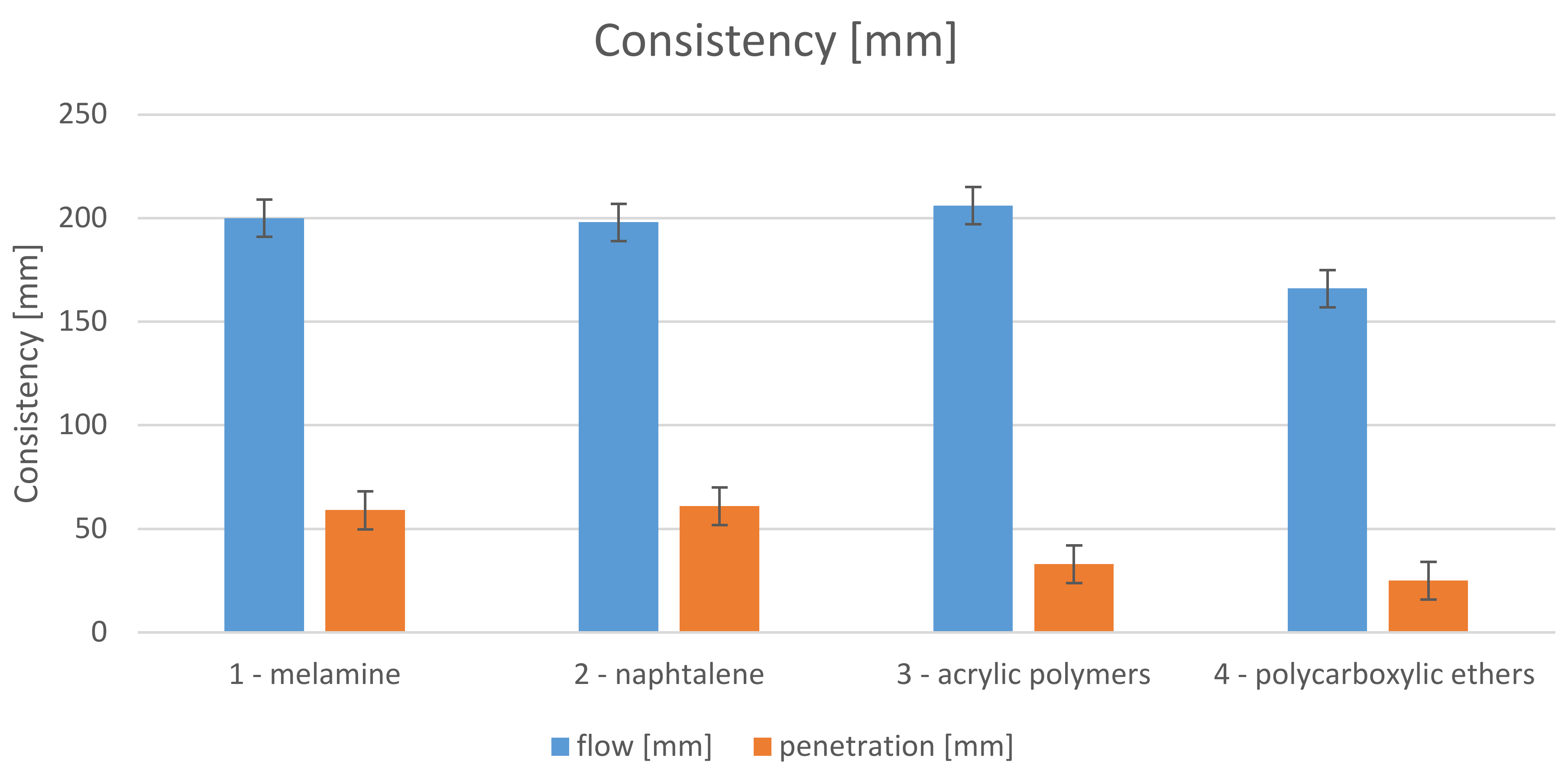
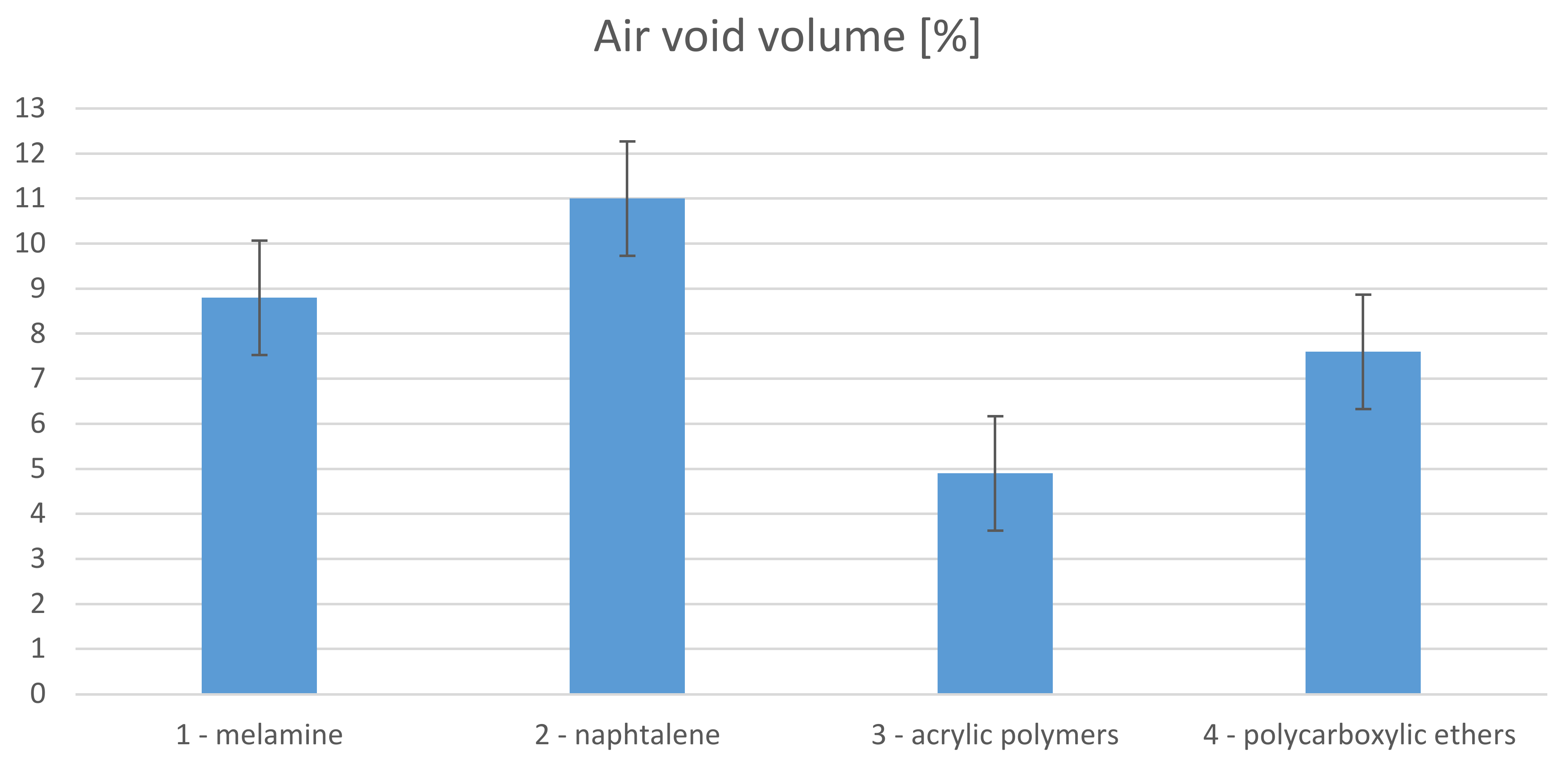
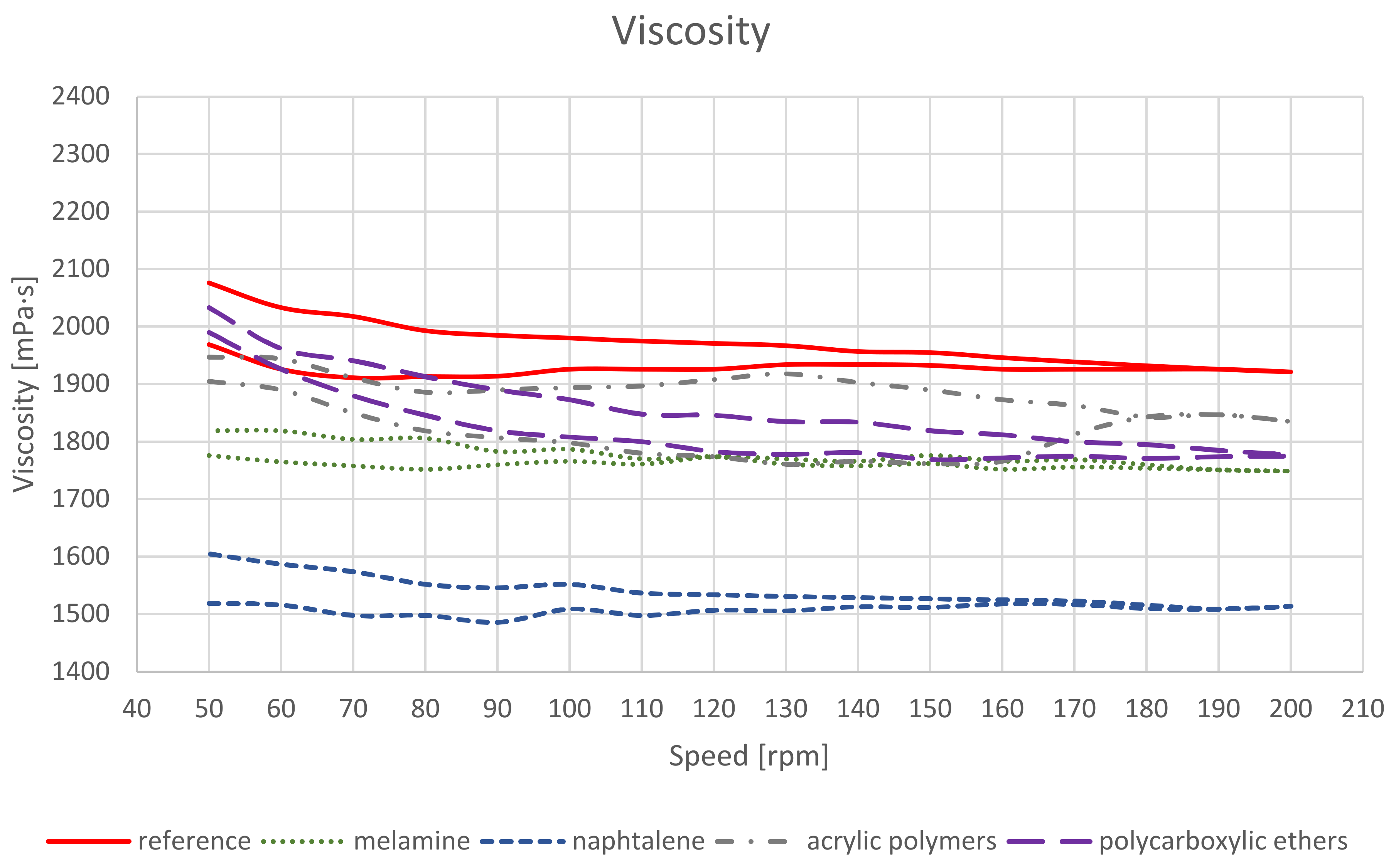
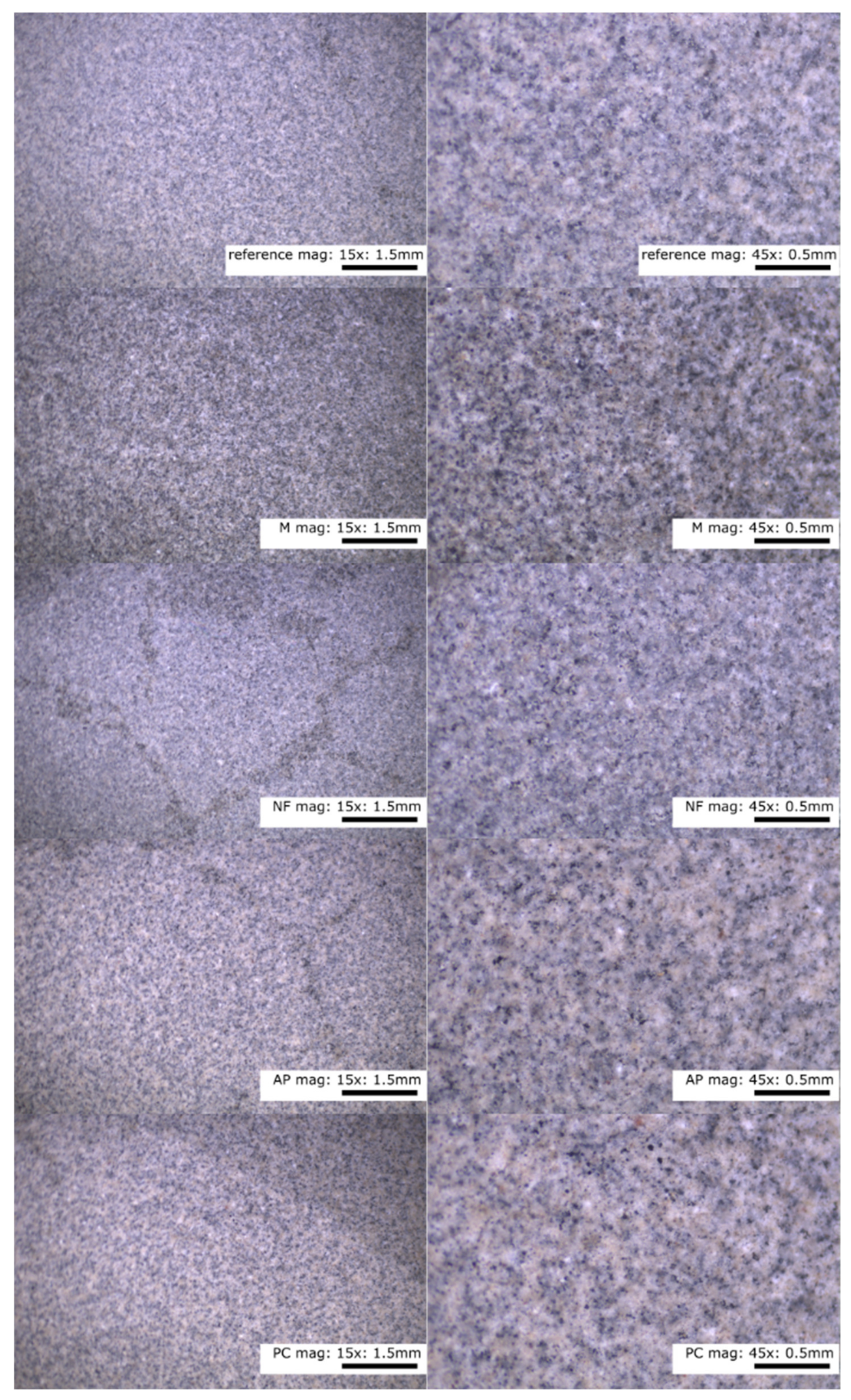
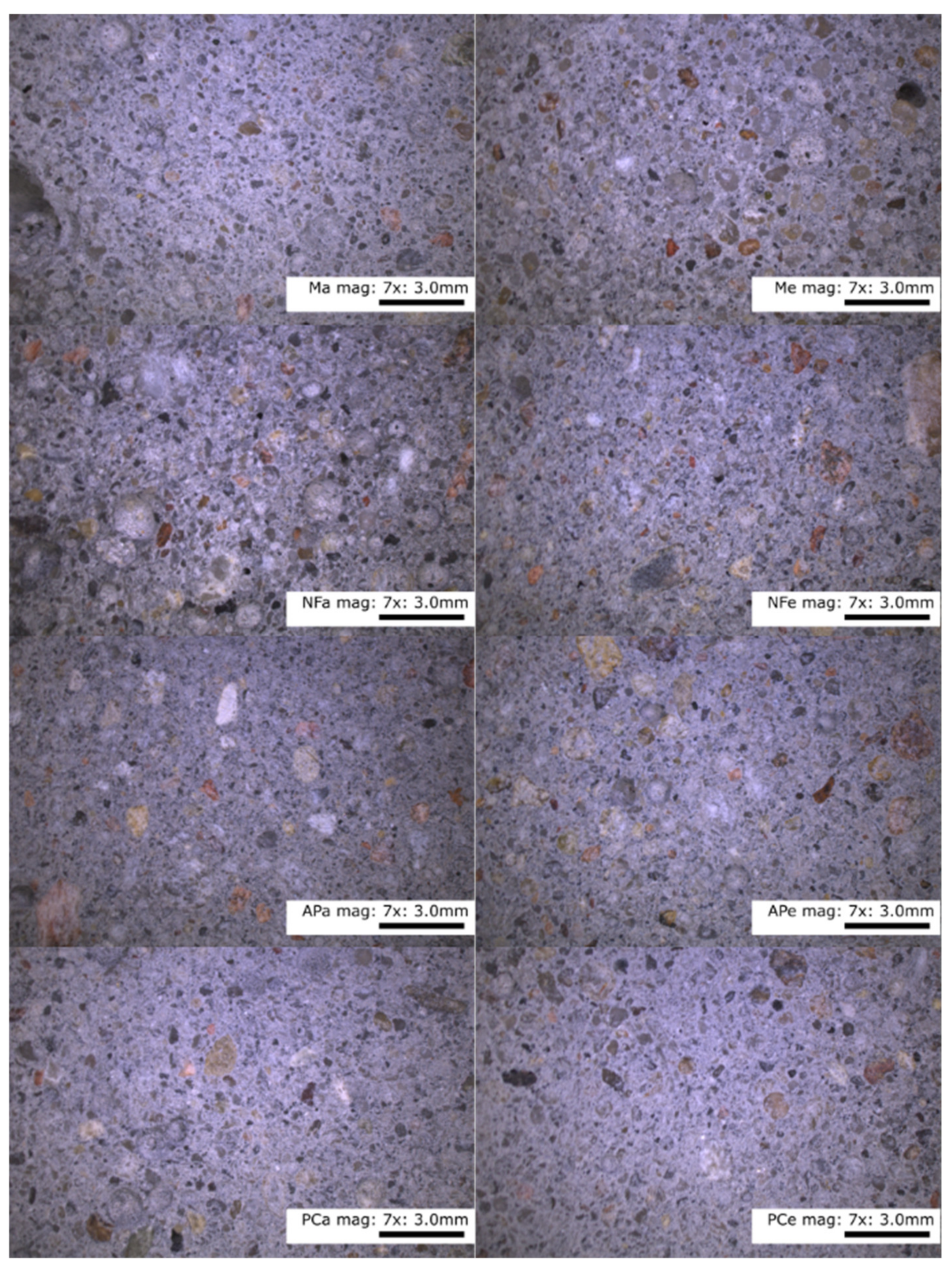
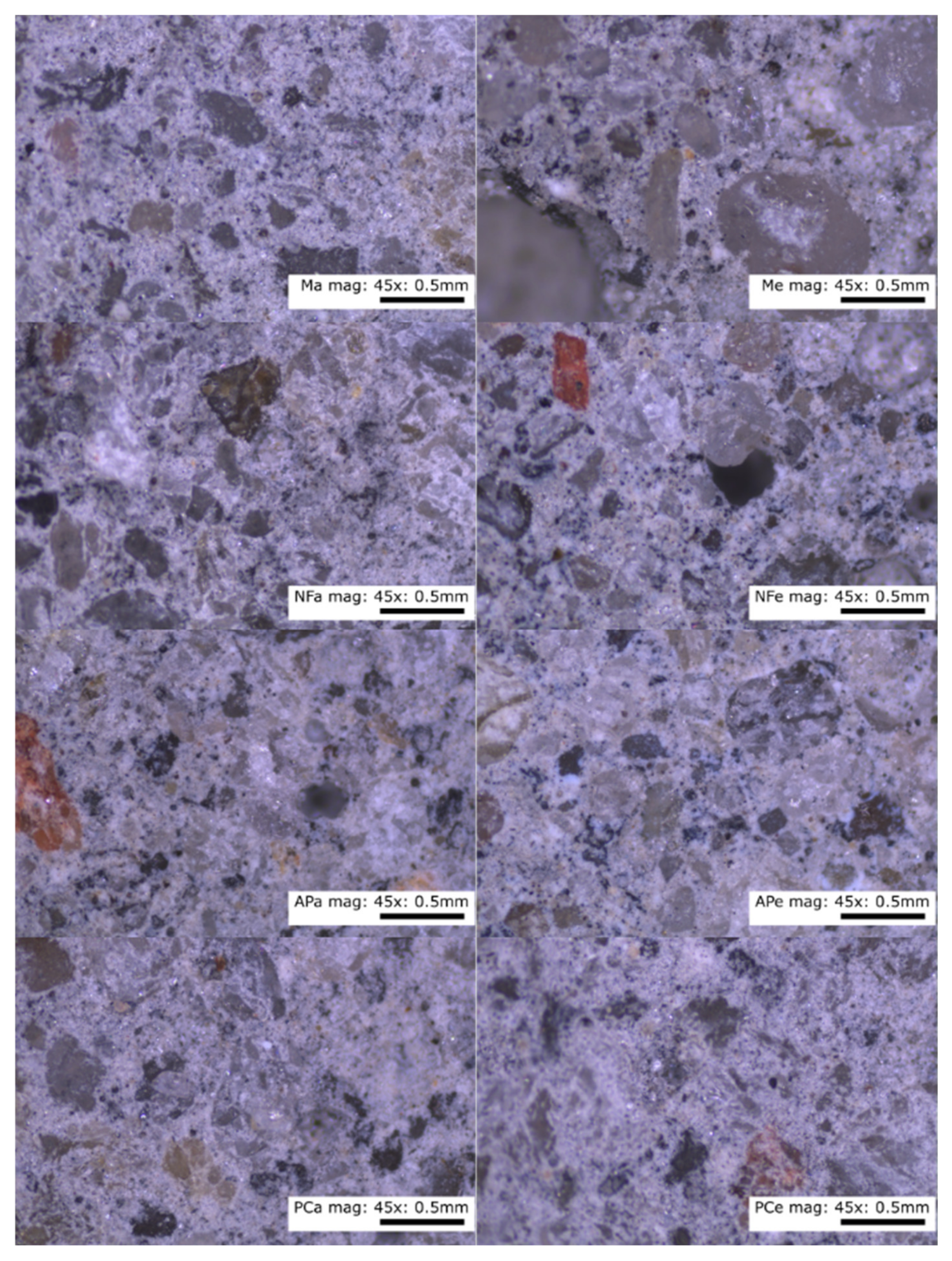

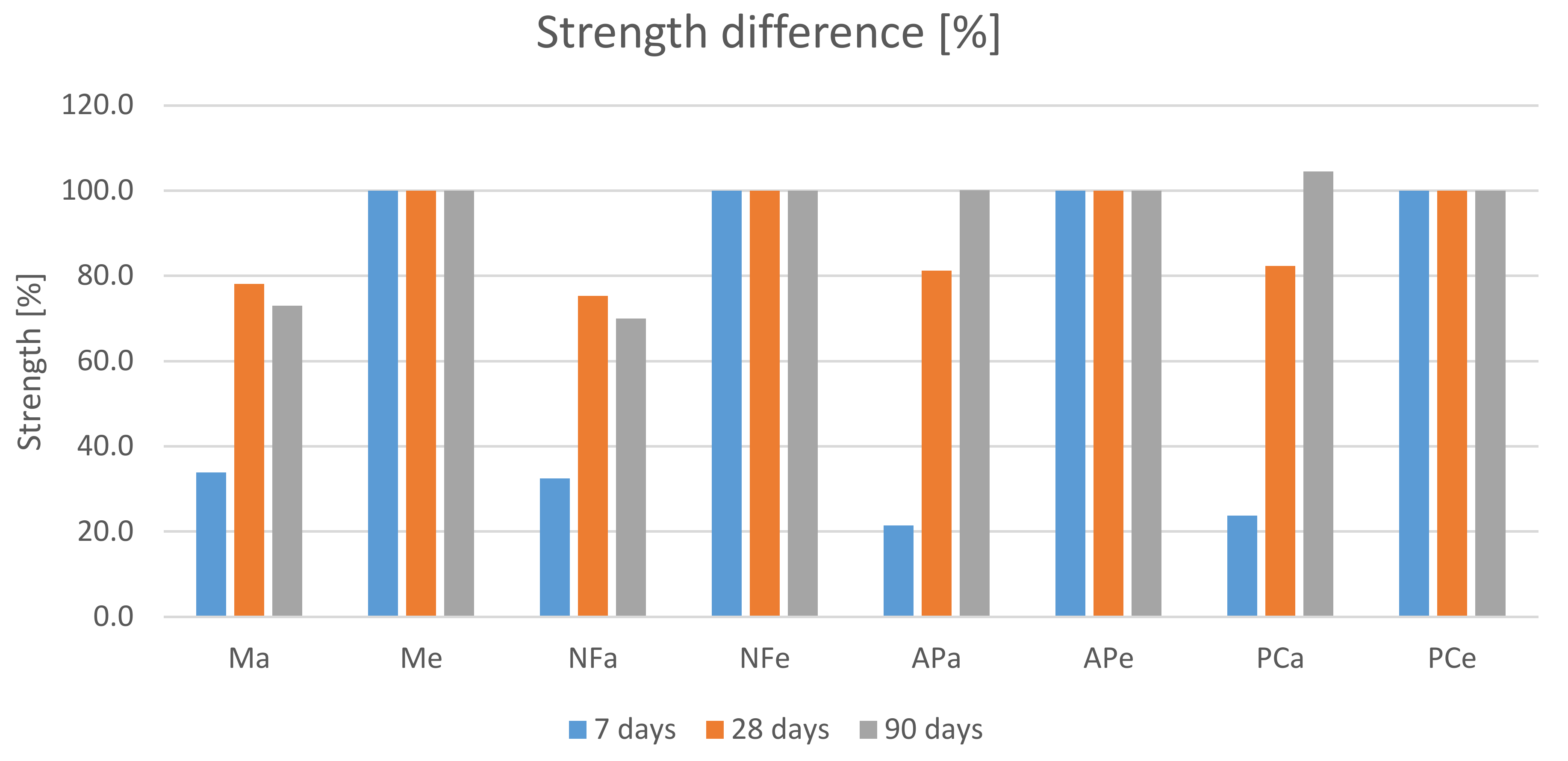

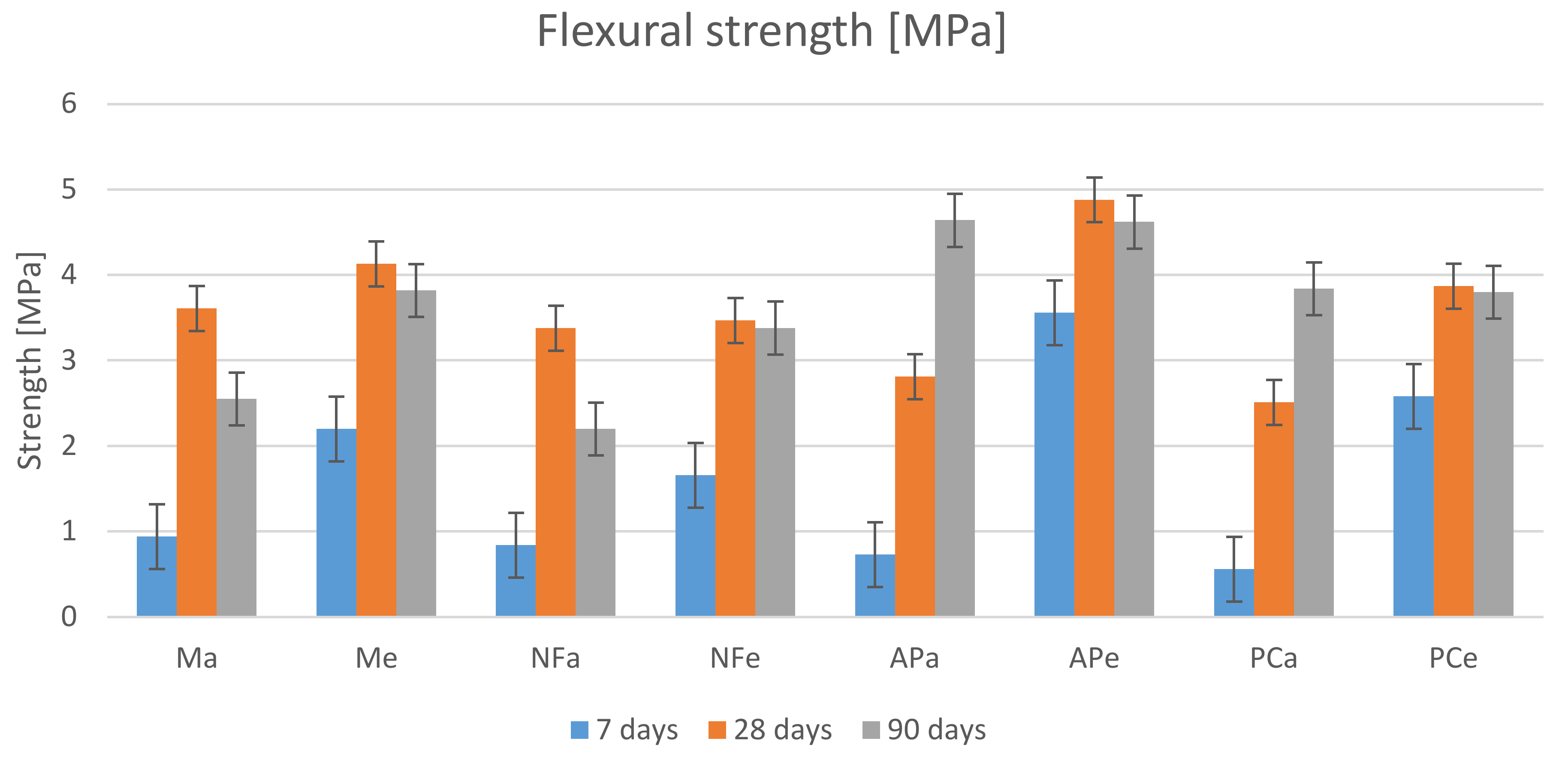
| Publication | Plasticiser | Slump | Viscosity | Curing Temperature | Strength | |||||||||
|---|---|---|---|---|---|---|---|---|---|---|---|---|---|---|
| PC | M | NF | V | L | /Flow | Room | Elevated | 1–3 | 7 | 14 | 28 | 90 | ||
| Palacios, 2005 | + | + | + | + | - | + | - | + | - | + | + | - | + | - |
| Criado, 2009 | + | + | - | - | + | + | + | - | - | - | - | - | - | - |
| Nurrudin, 2011 | + | - | - | - | - | + | - | - | + | + | + | - | + | - |
| Nurrudin, 2012 | + | - | - | - | - | + | - | - | + | + | + | - | + | - |
| Montes, 2012 | + | - | + | - | - | - | + | - | - | - | - | - | - | - |
| Laskar, 2013 | + | - | - | - | + | + | + | - | - | - | - | - | - | - |
| Nematollahi, 2014 | + | + | + | - | - | + | - | - | + | + | - | - | - | - |
| Jang, 2014 | + | - | + | - | - | + | - | + | - | + | + | + | + | - |
| Xie, 2016 | + | - | + | - | - | - | + | - | - | - | - | - | - | - |
| Salami, 2016 | - | - | + | - | - | - | - | - | + | + | + | + | + | - |
| Jithendra, 2018 | nd | nd | nd | nd | nd | + | - | + | - | + | - | - | + | - |
| Bong, 2019 | + | - | + | - | - | + | - | - | + | + | - | - | - | - |
| Gupta, 2021 | + | - | - | - | - | - | - | nd | nd | - | - | - | + | - |
| Specimen Designation | Plasticiser Base | Curing Conditions |
|---|---|---|
| Ma | melamine (M) | 20° |
| Me | 70° | |
| NFa | naphtalene (NF) | 20° |
| NFe | 70° | |
| APa | acrylic polymers (AP) | 20° |
| APe | 70° | |
| PCa | polycarboxylic ethers (PC) | 20° |
| PCe | 70° |
Publisher’s Note: MDPI stays neutral with regard to jurisdictional claims in published maps and institutional affiliations. |
© 2021 by the author. Licensee MDPI, Basel, Switzerland. This article is an open access article distributed under the terms and conditions of the Creative Commons Attribution (CC BY) license (https://creativecommons.org/licenses/by/4.0/).
Share and Cite
Anaszewicz, Ł. Effect of Various Types of Superplasticisers on Consistency, Viscosity, Structure and Long-Term Strength of Geopolymer Products. Materials 2021, 14, 7614. https://doi.org/10.3390/ma14247614
Anaszewicz Ł. Effect of Various Types of Superplasticisers on Consistency, Viscosity, Structure and Long-Term Strength of Geopolymer Products. Materials. 2021; 14(24):7614. https://doi.org/10.3390/ma14247614
Chicago/Turabian StyleAnaszewicz, Łukasz. 2021. "Effect of Various Types of Superplasticisers on Consistency, Viscosity, Structure and Long-Term Strength of Geopolymer Products" Materials 14, no. 24: 7614. https://doi.org/10.3390/ma14247614






